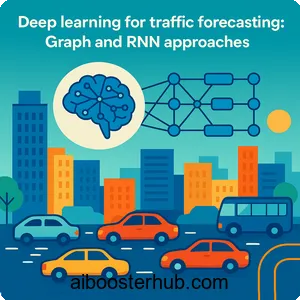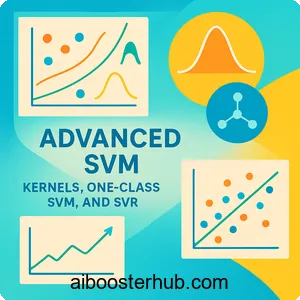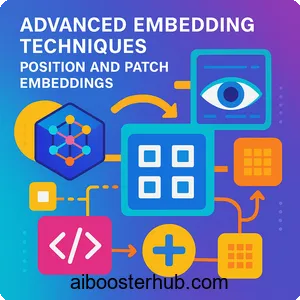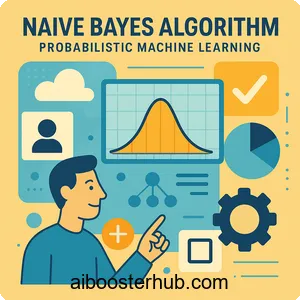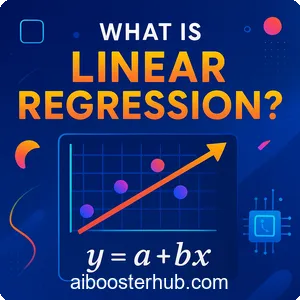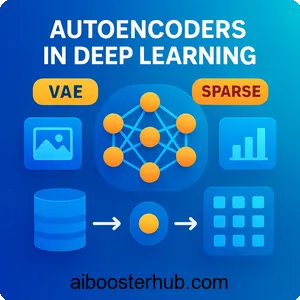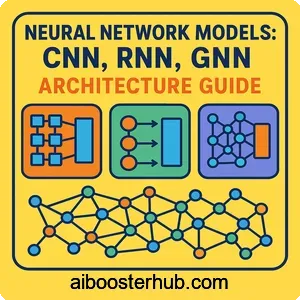Neural Architecture Search: Automated Deep Learning Design
The field of deep learning has witnessed remarkable progress, yet designing optimal neural network architectures remains a challenging and time-consuming task. Traditional approaches rely heavily on human expertise, intuition, and extensive trial-and-error experimentation. Enter Neural Architecture Search (NAS) – a revolutionary paradigm that automates the process of discovering high-performing neural network architectures. This automated machine learning technique has transformed how we approach deep learning design, making it more accessible and efficient while often discovering architectures that surpass human-designed networks.
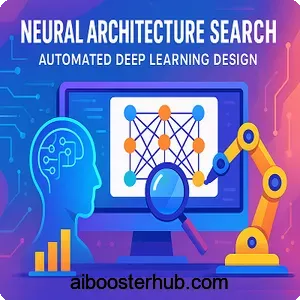
Neural architecture search represents a fundamental shift in how we build AI systems. Rather than manually crafting network layers, activation functions, and connections, NAS algorithms explore vast design spaces to automatically identify optimal architectures for specific tasks. This automation not only saves countless hours of expert time but also uncovers novel architectural patterns that human designers might never consider.
Content
Toggle1. Understanding neural architecture search
What is neural architecture search?
Neural architecture search is an automated machine learning technique that systematically searches through a defined space of possible neural network architectures to find the optimal design for a given task and dataset. At its core, NAS treats architecture design as an optimization problem where the goal is to discover a network configuration that maximizes performance metrics such as accuracy while satisfying constraints like computational efficiency or model size.
The fundamental premise of NAS is simple yet powerful: given a search space of possible architectures, a search strategy to explore this space, and a performance estimation method to evaluate candidate architectures, we can automate the discovery of neural network designs. This process mirrors natural evolution or hyperparameter optimization but operates at the architectural level, determining the structure of the network itself rather than just tuning its parameters.
The three pillars of NAS
Every neural architecture search system consists of three essential components that work together to discover optimal architectures:
Search Space: This defines the set of possible architectures that the NAS algorithm can explore. The search space can range from highly constrained (e.g., only varying the number of layers in a sequential network) to extremely flexible (e.g., allowing arbitrary connections between operations). Common search spaces include chain-structured networks, multi-branch architectures, and cell-based designs where repeating computational units are optimized.
Search Strategy: This determines how the NAS algorithm navigates through the search space. Different strategies include random search, reinforcement learning, evolutionary algorithms, gradient-based methods, and Bayesian optimization. The choice of search strategy significantly impacts both the quality of discovered architectures and the computational cost of the search process.
Performance Estimation Strategy: Since training neural networks from scratch is computationally expensive, NAS systems need efficient methods to estimate architecture performance. Techniques include training on reduced datasets, using fewer training epochs, employing weight sharing across architectures, or learning surrogate models that predict architecture performance without full training.
Why neural architecture search matters
The significance of NAS extends beyond mere automation. Traditional architecture design requires deep expertise in neural networks, domain knowledge, and extensive computational resources for experimentation. NAS democratizes this process, enabling researchers and practitioners with limited expertise to discover competitive architectures tailored to their specific problems.
Moreover, NAS has repeatedly demonstrated its ability to discover architectures that outperform human-designed networks. Architectures found through neural architecture search have achieved state-of-the-art results across various domains including image classification, object detection, semantic segmentation, and natural language processing. These architectures often exhibit unexpected design patterns that challenge conventional wisdom about network design.
2. Search spaces in neural architecture search
Defining the architectural design space
The search space fundamentally constrains what architectures NAS can discover. A well-designed search space balances expressiveness (the ability to represent diverse architectures) with searchability (the feasibility of finding good solutions). Too restrictive, and the search space may not contain high-performing architectures; too expansive, and the search becomes computationally intractable.
Global search spaces allow NAS to design entire networks from scratch, specifying every layer type, connection pattern, and operation. While maximally flexible, global search spaces are extremely large and difficult to search efficiently. The number of possible architectures grows exponentially with network depth, creating combinatorial explosion.
Cell-based search spaces offer a more tractable alternative. Instead of designing complete networks, NAS optimizes smaller computational units called “cells” or “blocks” which are then stacked together following a predefined macro-architecture. This approach dramatically reduces the search space size while maintaining architectural diversity. The discovered cells can be stacked multiple times and scaled to different depths and widths, providing flexibility for different computational budgets.
Common architectural building blocks
Modern neural architecture search typically operates over a set of fundamental operations that serve as building blocks:
Standard convolutions with various kernel sizes (e.g., \(3 \times 3\), \(5 \times 5)\) remain foundational operations, capturing spatial patterns at different scales. Separable convolutions, which factorize standard convolutions into depthwise and pointwise operations, offer computational efficiency while maintaining representational capacity.
Pooling operations including max pooling and average pooling provide spatial downsampling and translation invariance. Identity connections (skip connections) enable gradient flow and facilitate training deeper networks, while zero operations effectively remove connections, allowing NAS to learn sparse architectures.
Dilated convolutions expand receptive fields without increasing parameter count, particularly valuable for dense prediction tasks. More recent search spaces incorporate attention mechanisms, transformer blocks, and other advanced operations, reflecting evolving architectural trends in deep learning.
Constraints and objectives in architecture search
Real-world neural architecture search must balance multiple objectives beyond raw accuracy. Computational constraints including inference latency, memory footprint, and energy consumption are increasingly critical, especially for deployment on mobile devices or edge hardware. Multi-objective NAS algorithms simultaneously optimize for accuracy and efficiency, discovering Pareto-optimal architectures that offer different accuracy-efficiency trade-offs.
The mathematical formulation of NAS as an optimization problem can be expressed as:
$$ \alpha^* = \arg\max_{\alpha \in \mathcal{A}} \mathcal{V}(\alpha) $$
where \(\alpha\) represents an architecture from the search space \(\mathcal{A}\), and \(\mathcal{V}(\alpha)\) is the validation performance. For multi-objective NAS, this extends to:
$$ \alpha^* = \arg\max_{\alpha \in \mathcal{A}} \left[ \mathcal{V}(\alpha) – \lambda \cdot \mathcal{C}(\alpha) \right] $$
where \(\mathcal{C}(\alpha)\) represents a cost function (e.g., latency, parameters) and \(\lambda\) controls the trade-off between accuracy and efficiency.
3. Search strategies for discovering architectures
Reinforcement learning approaches
Reinforcement learning was among the first successful approaches to neural architecture search. In this paradigm, architecture generation is framed as a sequential decision-making problem where an agent (typically a recurrent neural network) generates architecture descriptions as sequences of tokens, and the trained architecture’s validation accuracy serves as the reward signal.
The controller network samples architectures from the search space, which are then trained to convergence. The validation performance provides feedback to update the controller’s parameters using policy gradient methods such as REINFORCE. The objective is to maximize the expected reward:
$$J(\theta) = \mathbb{E}_{\alpha \sim p_\theta(\alpha)} \big[ R(\alpha) \big]$$
where \(\theta\) represents the controller’s parameters, \(\alpha\) is a sampled architecture, and \(R(\alpha)\) is the reward (validation accuracy). The gradient can be approximated as:
$$ \nabla_\theta J(\theta) \approx \frac{1}{m} \sum_{i=1}^{m} R(\alpha_i) \nabla_\theta \log p_\theta(\alpha_i) $$
While effective, RL-based NAS is computationally expensive, often requiring thousands of GPU days to discover architectures. However, it successfully demonstrated that automated search could produce architectures competitive with human-designed networks.
Evolutionary algorithms
Evolutionary algorithms provide an alternative search strategy inspired by biological evolution. These methods maintain a population of architectures and iteratively improve them through mutation, crossover, and selection operations. High-performing architectures are more likely to survive and reproduce, gradually evolving the population toward better solutions.
A typical evolutionary NAS algorithm proceeds as follows: Initialize a population of random architectures, evaluate each architecture’s fitness (validation performance), select parent architectures based on fitness, generate offspring through mutation (randomly modifying operations or connections) and crossover (combining components from multiple parents), and repeat the process for multiple generations.
Evolutionary approaches naturally support multi-objective optimization and can explore diverse regions of the search space. They are also highly parallelizable since multiple architectures can be evaluated simultaneously. However, they still require substantial computational resources and many architecture evaluations.
Gradient-based neural architecture search
Gradient-based methods represent a major breakthrough in making NAS more efficient. The key insight is to relax the discrete architecture search space into a continuous one, enabling the use of gradient descent for optimization. This approach, exemplified by DARTS (Differentiable Architecture Search), dramatically reduces search costs.
In gradient-based NAS, instead of selecting a single operation for each connection, we maintain a weighted combination of all possible operations. The architecture is represented by continuous weights \(\alpha) that determine the mixing of operations:
$$ \bar{o}^{(i,j)}(x) = \sum_{o \in \mathcal{O}} \frac{\exp(\alpha_o^{(i,j)})}{\sum_{o’ \in \mathcal{O}} \exp(\alpha_{o’}^{(i,j)})} \cdot o(x) $$
where \(\bar{o}^{(i,j)}\) is the mixed operation between nodes \(i\) and \(j\), \(\mathcal{O}\) is the set of candidate operations, and \(\alpha_o^{(i,j)}\) are the architecture parameters for operation \(o\).
The search involves bi-level optimization: minimizing training loss with respect to network weights \(w\) and minimizing validation loss with respect to architecture parameters \(\alpha\):
$$\begin{align}
\min_{\alpha} \quad & \mathcal{L}_{\text{val}}\big(w^{(\alpha)}, \alpha\big) \\
\text{s.t.} \quad & w^{(\alpha)} = \arg\min_{w} \, \mathcal{L}_{\text{train}}(w, \alpha)
\end{align}$$
Here’s a simplified Python implementation demonstrating the concept:
import torch
import torch.nn as nn
import torch.nn.functional as F
class MixedOperation(nn.Module):
"""A mixed operation that combines multiple candidate operations"""
def __init__(self, operations):
super().__init__()
self.operations = nn.ModuleList(operations)
# Architecture parameters (alpha)
self.alpha = nn.Parameter(torch.randn(len(operations)))
def forward(self, x):
# Softmax over architecture parameters
weights = F.softmax(self.alpha, dim=0)
# Weighted sum of operations
return sum(w * op(x) for w, op in zip(weights, self.operations))
class DARTSCell(nn.Module):
"""Simplified DARTS cell with mixed operations"""
def __init__(self, in_channels, out_channels):
super().__init__()
# Define candidate operations
operations = [
nn.Conv2d(in_channels, out_channels, 3, padding=1),
nn.Conv2d(in_channels, out_channels, 5, padding=2),
nn.MaxPool2d(3, stride=1, padding=1),
nn.Identity()
]
self.mixed_op = MixedOperation(operations)
def forward(self, x):
return self.mixed_op(x)
# Training loop for DARTS
def train_darts(model, train_loader, val_loader, epochs=50):
# Separate optimizers for weights and architecture
w_optimizer = torch.optim.SGD(model.parameters(), lr=0.025, momentum=0.9)
alpha_optimizer = torch.optim.Adam([model.mixed_op.alpha], lr=3e-4)
for epoch in range(epochs):
# Update architecture parameters on validation set
model.train()
for val_data, val_target in val_loader:
alpha_optimizer.zero_grad()
output = model(val_data)
loss = F.cross_entropy(output, val_target)
loss.backward()
alpha_optimizer.step()
# Update network weights on training set
for train_data, train_target in train_loader:
w_optimizer.zero_grad()
output = model(train_data)
loss = F.cross_entropy(output, train_target)
loss.backward()
w_optimizer.step()
# Discretize architecture by selecting operations with highest alpha
with torch.no_grad():
selected_op_idx = torch.argmax(model.mixed_op.alpha).item()
print(f"Selected operation index: {selected_op_idx}")
Gradient-based NAS reduces search time from thousands of GPU days to just a few GPU days, making neural architecture search accessible to a broader research community.
Performance prediction and early stopping
A critical challenge in NAS is efficiently estimating architecture performance without full training. Performance prediction strategies significantly accelerate the search process:
Weight sharing trains a single overparameterized “supernet” containing all possible architectures. Individual architectures inherit weights from this supernet, enabling rapid evaluation. While this dramatically reduces computational cost, weight sharing introduces bias since architectures compete for shared parameters during supernet training.
Learning curve extrapolation trains architectures for a limited number of epochs and predicts final performance by extrapolating the learning curve. Various models from simple power laws to sophisticated neural networks can perform this extrapolation.
Low-fidelity estimates evaluate architectures on smaller datasets, reduced image resolutions, or fewer training epochs. While less accurate than full training, these estimates provide useful ranking information for comparing architectures.
Surrogate models learn to predict architecture performance from architectural features without training the architecture. These models, often Gaussian processes or neural networks, are trained on a database of previously evaluated architectures and their performance.
4. AutoML and the broader automation landscape
Neural architecture search within AutoML
Neural architecture search is a crucial component of the broader automated machine learning ecosystem. While NAS focuses specifically on network architecture, automl encompasses the full machine learning pipeline automation including data preprocessing, feature engineering, algorithm selection, hyperparameter optimization, and model deployment.
The relationship between NAS and automl is complementary. NAS typically assumes a fixed learning algorithm (gradient descent with specific optimizers) and focuses on the architecture search problem. Comprehensive automl systems integrate NAS with other automation components, creating end-to-end solutions that minimize human intervention.
For deep learning specifically, a complete automl pipeline might include: automated data augmentation to improve model generalization, neural architecture search to discover optimal network structures, hyperparameter optimization for learning rates, regularization, and training schedules, and neural architecture optimization for deployment-specific constraints.
Hyperparameter optimization versus architecture search
While conceptually similar, neural architecture optimization and hyperparameter optimization operate at different levels of abstraction. Hyperparameter optimization tunes continuous or categorical parameters of a fixed architecture such as learning rate, batch size, dropout rate, or weight decay. These parameters affect training dynamics and regularization but don’t change the fundamental network structure.
Architecture search, conversely, modifies the network’s computational graph itself – the layers, operations, and connections that define what computations the network performs. This structural search space is vastly larger and more complex than typical hyperparameter spaces.
Many modern automl systems perform joint optimization, simultaneously searching over architectures and hyperparameters. This joint search can discover synergistic combinations where specific architectures work best with particular hyperparameter configurations.
Transfer learning and architecture search
An intriguing question in neural architecture search is whether architectures discovered for one task transfer to others. Empirical evidence suggests that architectures found through NAS on large-scale datasets often transfer well to related tasks, similar to how learned weights transfer in traditional transfer learning.
Cell-based search spaces particularly facilitate transferability. Cells optimized on proxy tasks (like CIFAR-10) can be scaled and applied to larger datasets (like ImageNet) or even different domains. This transferability significantly reduces the computational burden since expensive architecture search need not be repeated for every new task.
However, transfer is not universal. Architectures optimized for specific constraints (e.g., mobile deployment) may not perform well in different contexts (e.g., cloud deployment). Domain-specific characteristics like input modality, task type, and available computational resources influence optimal architectures, suggesting that while transfer provides a strong starting point, task-specific adaptation may still be beneficial.
5. Practical applications and real-world impact
Computer vision applications
Neural architecture search has made perhaps its greatest impact in computer vision, where architectural innovations directly translate to performance improvements. NAS-discovered architectures have achieved state-of-the-art results across diverse vision tasks:
Image classification was the initial proving ground for NAS. Architectures discovered through automated search matched or exceeded carefully hand-crafted networks like ResNet and DenseNet. These NAS architectures often exhibited unexpected design patterns, such as unconventional layer connectivity or novel combinations of operations that human designers might not consider.
Object detection and segmentation benefit from NAS by discovering specialized architectures for dense prediction tasks. Multi-scale feature processing and efficient spatial reasoning are crucial for these tasks, and NAS has found architectures that excel at capturing both local details and global context.
Efficient mobile vision represents a particularly impactful application. NAS can explicitly optimize for mobile device constraints, discovering architectures that achieve strong accuracy with minimal latency and energy consumption. These efficiency-optimized architectures enable sophisticated computer vision on resource-constrained devices.
Natural language processing and beyond
While initially focused on vision, neural architecture search has expanded to other domains with impressive results:
Language modeling and machine translation benefit from NAS-discovered recurrent and transformer architectures. Automated search has identified novel attention patterns and recurrent cell designs that improve language understanding and generation tasks.
Speech recognition leverages NAS to discover architectures specialized for temporal sequence processing. The unique characteristics of audio data—long-range dependencies, temporal hierarchies—benefit from tailored architectures that NAS can automatically discover.
Reinforcement learning applies NAS to discover policy network architectures. Different RL environments may benefit from different architectural inductive biases, and NAS can automatically adapt to environment-specific characteristics.
Production deployment and practical considerations
Deploying NAS-discovered architectures in production requires addressing several practical concerns:
Hardware-aware NAS explicitly incorporates deployment hardware characteristics into the search process. Rather than using proxy metrics like FLOPs or parameter count, hardware-aware NAS measures actual latency, throughput, or energy consumption on target devices. This ensures discovered architectures perform well on specific deployment platforms.
Architecture stability and reproducibility matter for production systems. Some NAS methods exhibit high variance across runs, discovering different architectures with different random seeds. For production deployment, understanding and controlling this variance ensures reliable performance.
Interpretability and maintenance of discovered architectures pose challenges. Automatically generated architectures may be difficult to understand, debug, or modify. Balancing automation with interpretability remains an open challenge, with some practitioners favoring more constrained search spaces that produce comprehensible architectures.
Here’s a practical example of evaluating NAS architectures with hardware constraints:
import torch
import time
import numpy as np
class HardwareAwareEvaluator:
"""Evaluates architectures considering both accuracy and hardware metrics"""
def __init__(self, device='cuda', num_warmup=10, num_iterations=100):
self.device = device
self.num_warmup = num_warmup
self.num_iterations = num_iterations
def measure_latency(self, model, input_shape=(1, 3, 224, 224)):
"""Measure inference latency on target hardware"""
model = model.to(self.device)
model.eval()
dummy_input = torch.randn(input_shape).to(self.device)
# Warmup
with torch.no_grad():
for _ in range(self.num_warmup):
_ = model(dummy_input)
# Measure
torch.cuda.synchronize()
start = time.time()
with torch.no_grad():
for _ in range(self.num_iterations):
_ = model(dummy_input)
torch.cuda.synchronize()
end = time.time()
avg_latency = (end - start) / self.num_iterations * 1000 # ms
return avg_latency
def count_parameters(self, model):
"""Count trainable parameters"""
return sum(p.numel() for p in model.parameters() if p.requires_grad)
def evaluate_architecture(self, model, val_loader, latency_weight=0.1):
"""Comprehensive architecture evaluation"""
# Measure accuracy
model.eval()
correct = 0
total = 0
with torch.no_grad():
for data, target in val_loader:
data, target = data.to(self.device), target.to(self.device)
outputs = model(data)
_, predicted = torch.max(outputs.data, 1)
total += target.size(0)
correct += (predicted == target).sum().item()
accuracy = 100 * correct / total
# Measure hardware metrics
latency = self.measure_latency(model)
params = self.count_parameters(model) / 1e6 # Millions
# Compute composite score (higher is better)
# Normalize latency to penalty term
latency_penalty = latency / 100.0 # Normalize to reasonable scale
score = accuracy - latency_weight * latency_penalty
return {
'accuracy': accuracy,
'latency_ms': latency,
'parameters_M': params,
'score': score
}
# Example usage
def compare_architectures(architectures, val_loader):
"""Compare multiple NAS-discovered architectures"""
evaluator = HardwareAwareEvaluator()
results = []
for name, model in architectures.items():
print(f"\nEvaluating {name}...")
metrics = evaluator.evaluate_architecture(model, val_loader)
metrics['name'] = name
results.append(metrics)
print(f" Accuracy: {metrics['accuracy']:.2f}%")
print(f" Latency: {metrics['latency_ms']:.2f}ms")
print(f" Parameters: {metrics['parameters_M']:.2f}M")
print(f" Score: {metrics['score']:.2f}")
# Find best architecture
best = max(results, key=lambda x: x['score'])
print(f"\nBest architecture: {best['name']}")
return results
6. Challenges and future directions
Computational costs and search efficiency
Despite significant progress, computational cost remains a primary challenge in neural architecture search. Early NAS methods required thousands of GPU days, putting them out of reach for most researchers and practitioners. While modern techniques have reduced this to tens or even single-digit GPU days, efficient search remains an active research area.
The computational challenge stems from the need to evaluate many candidate architectures. Even with aggressive performance prediction strategies, some level of actual training is necessary to assess architecture quality. The tension between search efficiency and evaluation accuracy persists—more accurate evaluation requires more computation, but faster approximations may mislead the search.
Future directions include developing better performance predictors that can accurately rank architectures with minimal training, creating more efficient search strategies that intelligently explore the search space, and designing better search spaces that concentrate high-performing architectures in regions that are easier to find.
Understanding what makes architectures work
A deeper challenge is understanding why certain architectures discovered by NAS perform well. Neural architecture search often operates as a black box, exploring architectures without providing insight into design principles. Discovered architectures may contain patterns that are effective but not interpretable.
Developing theoretical understanding of NAS would enable designing better search spaces and more efficient search strategies. Questions include: What architectural properties contribute most to performance? How do different operations interact? What makes an architecture robust to different datasets and tasks? Can we identify universal design principles that transcend specific search methods?
Research into interpretable NAS aims to answer these questions by analyzing discovered architectures, identifying common motifs, and developing explanatory frameworks. This understanding would transform NAS from pure automation to a tool that augments human intuition with data-driven insights.
Democratization and accessibility
Making neural architecture search accessible to a broader audience remains an important goal. Current NAS methods still require significant computational resources and technical expertise. Truly democratizing NAS requires developing methods that work with limited compute budgets, creating user-friendly tools that hide technical complexity, establishing best practices and guidelines for applying NAS, and building repositories of transferable architectures that can be readily adapted.
The vision is for NAS to become a standard tool in the machine learning practitioner’s toolkit, used routinely rather than reserved for specialized research projects. Progress toward this goal includes developing efficient NAS algorithms, cloud-based NAS services, and open-source implementations that lower barriers to entry.
Multi-objective optimization and specialized constraints
Real-world applications increasingly require optimizing multiple objectives beyond accuracy. Latency, energy efficiency, memory footprint, fairness, robustness, and interpretability all matter for practical deployment. Multi-objective NAS that discovers Pareto-optimal architectures trading off these various objectives represents an important research direction.
Specialized constraints pose additional challenges. Privacy-preserving architectures for federated learning, robust architectures resistant to adversarial attacks, and fair architectures that avoid biased predictions all require incorporating domain-specific considerations into the search process. Extending NAS to handle these complex, multi-faceted requirements will broaden its applicability to real-world problems.
8. Conclusion
Neural architecture search represents a paradigm shift in how we approach deep learning system design, moving from manual craftsmanship to automated optimization. By systematically exploring architectural design spaces, NAS has demonstrated the ability to discover novel, high-performing architectures that rival or exceed human-designed networks across diverse applications. The field has evolved rapidly from computationally prohibitive early methods to efficient gradient-based approaches that make automated machine learning practical for a wider audience.
As neural architecture search continues to mature, it promises to democratize deep learning expertise, enabling practitioners to discover task-specific architectures without extensive manual tuning. The ongoing challenges of computational efficiency, theoretical understanding, and multi-objective optimization present exciting research opportunities. Looking forward, NAS will likely become an integral component of the machine learning workflow, seamlessly integrated with other automl techniques to deliver end-to-end automation while augmenting rather than replacing human insight and domain expertise.


